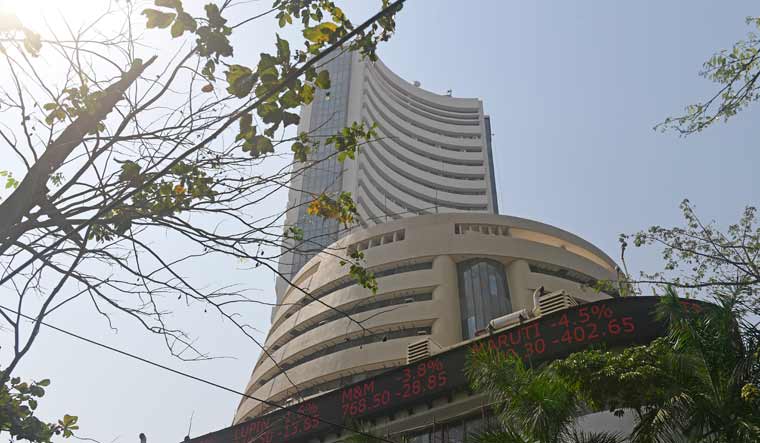Stock markets have had a roller coaster ride this year. On Friday, the Sensex tumbled 334 points or 0.8 per cent to settle at 40,445.15 points, amid a sell-off across stocks of automobile companies, consumer goods firms, non-banking finance companies and capital goods majors. Weak economic indicators and the Reserve Bank of India surprisingly holding interest rates also weighed on sentiments.
However, even as India’s economy has slowed down sharply to 4.5 per cent in the second quarter, the benchmark indices have touched record highs. On November 28, the BSE Sensex touched a life high of 41,163.79 points. Stock broker Kotak Securities has a Sensex target of 45,500 by the end of December 2020. The NSE Nifty 50 index is seen at 13,400, compared with Friday’s closing level of 11,921.50 points.
Jaideep Hansraj, MD and CEO of Kotak Securities, said that despite the economic slowdown, markets had risen this year due to the strong inflows from foreign portfolio investors as well as SIP (systematic investment plans) flows into domestic mutual funds. The corporate tax rate cuts announced by finance minister Nirmala Sitharaman in September were also hailed as it will give earnings a boost.
Another thing to consider is that interest rates are falling globally, making equity one of the best asset class as far as returns go right now.
In India, fixed deposits rates have fallen in the wake of the 135 basis points repo rate reduction by the RBI since February. Right now, FD rates average around 6.5 per cent. Post-tax returns on FDs will be around 4 per cent, which is even lower than the current inflation rate. In October, retail inflation hit a 16-month high of 4.62 per cent. Post-tax returns of liquid funds as well as arbitrage funds are also lower than inflation currently.
Therefore, investors may have continued to invest in equity funds via SIPs, where returns have been higher. Average monthly SIP flows into mutual funds have risen to Rs. 8,230 crore now.
The financial system globally is flush with funds, given the interest rate cuts by the US Federal Reserve and quantitative easing in the European Union. Interest rates in many markets are near zero or in some instances even negative. So, these funds are making their way into emerging markets, including India, where FIIs can still get mid-to-high single-digit returns.
So far in calendar 2019, FPIs have invested Rs 92,115 crore in India’s equity markets. In 2018, they had pulled out Rs 33,014 crore.
These domestic as well as foreign fund flows have driven a 14.5 per cent rally in the BSE Sensex over the last one year. However, the midcap and smallcap indices continue to underperform as investors have chased select large stocks amid the economic and earnings uncertainties.
Hansraj says that despite the midcap and small-caps correcting sharply over the last 1-2 years, investors continue to channel money into the quality large-cap stocks, even though they may be at high valuations.
The mid and smallcap stocks could revive and begin to outperform only once the broader economy picks up, he added.
Kotak expects earnings of Nifty 50 companies to grow 10 per cent in the financial year ending March 2020 and 27 per cent in the next fiscal year.
Over the next three years, Kotak analysts expect corporate earnings to grow at a compounded annual growth rate of 18 per cent, compared with 8 per cent CAGR over the last three years.
Privatisation could be a big theme to watch out for in 2020, according to Kotak. In November, the cabinet approved the divestment of Bharat Petroleum Corp, Shipping Corporation of India and Container Corp of India. A strategic sale of these companies could help the government generate around Rs 80,000 crore, which could then set the ball rolling for other big-ticket divestments, it said.
“If the government were to privatise all non-strategic listed PSUs (excluding banks/financial PSUs) and keep 51 per cent in five strategic PSUs (ONGC, Coal India, Indian Oil, Bharat Electronics and Hindustan Aeronautics), then it could fetch Rs 5 trillion over the next few years,” said Kotak Securities.
Stocks from sectors like banks, larger NBFCs backed by strong parentage, oil and gas, capital goods, construction and agro-chemicals are likely to see good earnings visibility next year, said Rusmik Oza, head of fundamental research at Kotak Securities.
The broker also prefers mid-cap cement and pharma companies as they are trading at far lower valuations than their larger counterparts and also have a better return on equity.



